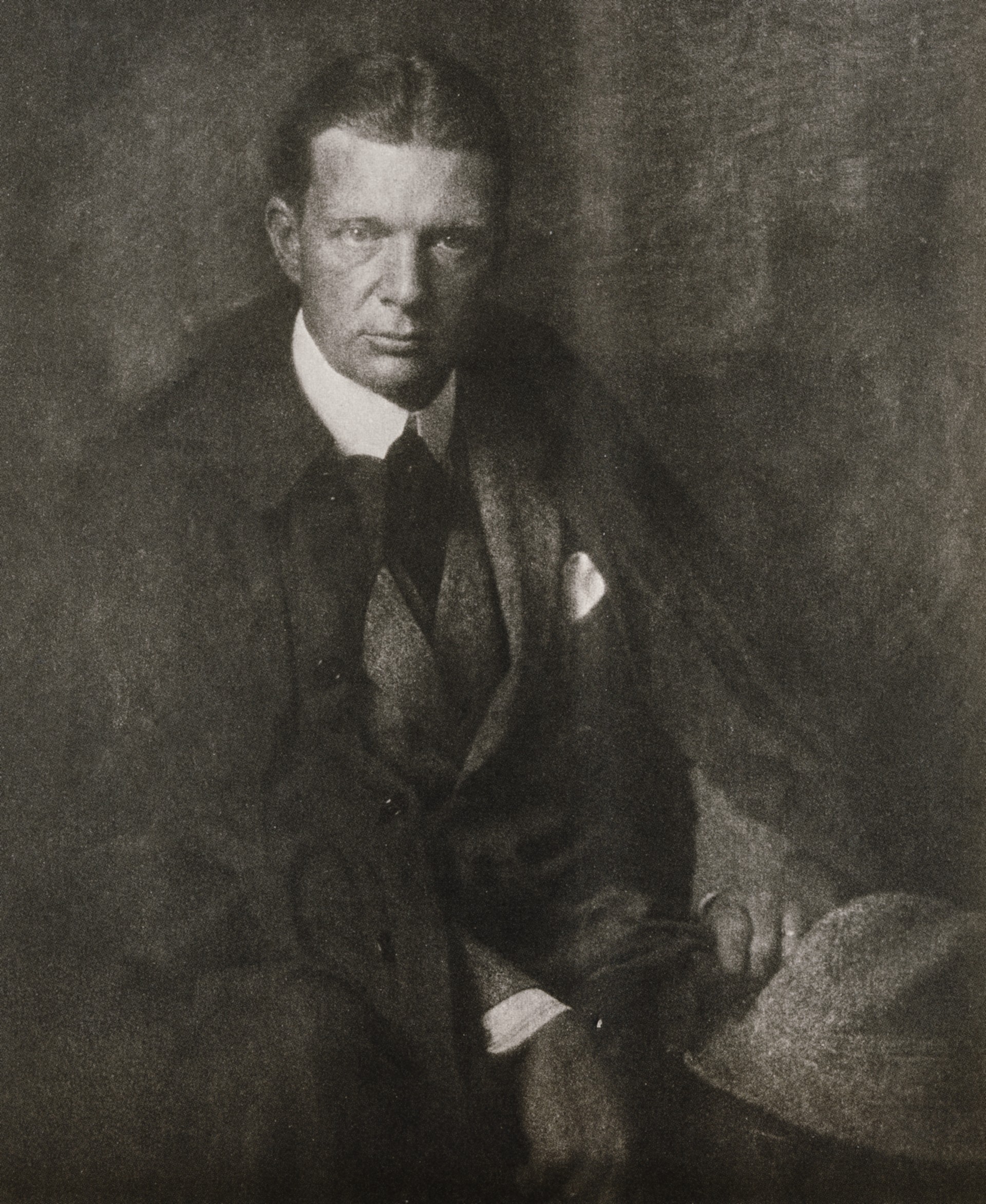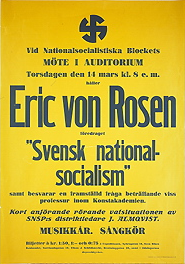1. Overview

Count Carl Gustaf Bloomfield Eric von Rosen (Graf Carl Gustaf Bloomfield Eric von RosenGerman; 1879-1948) was a multifaceted Swedish noble, known as an explorer, ethnographer, and patron. Despite his contributions to exploration and the establishment of the Finnish Air Force, his legacy is significantly overshadowed by his controversial and prominent role as a leading figure in the national socialist movement in Sweden during the 1930s. His personal use of the swastika symbol, which predated its adoption by the Nazi Party, became entangled with the rise of Nazism, leading to enduring criticism regarding his political affiliations and their impact on human rights and social progress.
2. Early Life and Family
Carl Gustaf Emil von Rosen's early life and family background provided the foundation for his later endeavors as an explorer and his connections within Swedish high society, though these connections would later be complicated by his political activities.
2.1. Birth and Family Background
Carl Gustaf Bloomfield Eric von Rosen was born on June 2, 1879, in Stockholm, Sweden, and passed away on April 25, 1948, in Skeppsholmen, Stockholm. He was the son of Count Carl Gustaf von Rosen and Ella Carlton Moore. His mother, Ella Carlton Moore, hailed from Philadelphia, Pennsylvania, United States, and was a direct descendant of the prominent Winthrop family. His grandmother was Clara Jessup Moore, a notable writer and philanthropist. Eric von Rosen was also the brother of Count Clarence von Rosen, who was a member of the International Olympic Committee.
2.2. Marriage and Children
Von Rosen was married to Mary Fock (1886-1967), a baroness. Together, they had six children: Björn (born 1905), Mary (born 1906), Carl Gustaf von Rosen (born 1909), Birgitta (born 1913), Egil (born 1919), and Anna (born 1926). His grandson, through his daughter Birgitta, is the acclaimed film director Peter Nestler, who in 2009 created a documentary film about von Rosen titled Death and Devil (Tod und TeufelGerman).
3. Explorer and Ethnographer
Von Rosen dedicated a significant portion of his life to exploration and ethnographic studies, establishing himself as a respected figure in these fields and contributing to various scientific and cultural initiatives.
3.1. Expeditions
As an explorer and ethnographer, Carl Gustaf Emil von Rosen undertook several notable expeditions. One of his most significant journeys was to South America in 1901. During these travels, he engaged in ethnographic work, studying and documenting various cultures and peoples, which contributed to his standing as a prominent figure in the field.
3.2. Patronage
Beyond his direct involvement in expeditions, von Rosen was also a significant patron. He supported various cultural and scientific endeavors, using his influence and resources to foster advancements in these areas. His status as a prominent figure within the Swedish upper class allowed him to play a notable role in society, extending his influence beyond his personal explorations.
4. The von Rosen Swastika
The swastika symbol became closely associated with Carl Gustaf Emil von Rosen through his personal use, its adoption by the Finnish Air Force, and its later, controversial connection to Nazism.
4.1. Personal Use and Origins
Eric von Rosen adopted the swastika as a personal owner's mark, using a version with slightly shorter arms. His initial encounter with the symbol occurred during his school years, when he observed it on runestones located on the island of Gotland, Sweden. Believing the symbol signified good luck for the Vikings, he integrated it into his personal effects. For his 1901 expedition to South America, he had the swastika carved into all his luggage. The symbol was also prominently featured in the hunting lodge he commissioned in 1909, built by architects Ivar Tengbom and Ernst Torulf, which is now part of the Jaktstuguskogen Nature Reserve. Additionally, an iron cast of the swastika adorned the fireplace in his castle.
4.2. Adoption by the Finnish Air Force
In March 1918, during the Finnish Civil War, Eric von Rosen, a staunch supporter of Finland, donated an aircraft to the Finnish Whites. This act marked the inception of the Finnish Air Force. The donated aircraft, a license-manufactured Morane-Saulnier Type L (also known as a Thulin D), bore von Rosen's personal emblem: a blue swastika on a white background. The newly formed Finnish Air Force subsequently adopted this specific roundel as its national insignia, a symbol that remained in use for a period.
4.3. Connection to Nazism

While Hermann Göring likely observed von Rosen's swastika emblem during his stay at von Rosen's castle, where it was forged into a metal piece at the fireplace, it is important to note that the German Nazi Party had already adopted the swastika as its symbol in 1920. This was two years before Göring first met Adolf Hitler in 1922. Therefore, von Rosen's personal swastika was not the origin of the Nazi swastika. However, von Rosen's association with Nazism was not merely coincidental. He became a prominent figure in Sweden's own national socialist movement during the 1930s and actively participated in their events, including giving speeches at Swedish Nazi Party gatherings in 1935.
5. Relationship to Hermann Göring
Carl Gustaf Emil von Rosen's familial connections extended to prominent figures within the Nazi regime, most notably through his relationship with Hermann Göring.
Von Rosen became the brother-in-law of Hermann Göring through marriage. This connection arose when von Rosen's wife's sister, Carin von Kantzow, married Göring. Their initial acquaintance occurred under unusual circumstances: Göring was flying Eric von Rosen from Stockholm to Rockelstad Castle, located by Båven lake in Sörmland, Sweden. Due to severe bad weather conditions, Göring was forced to remain at the castle overnight. During this unexpected stay, he met Carin von Kantzow, who at the time was married to a Swedish officer, Nils von Kantzow. Carin and Nils divorced in 1922, after which she married Göring, becoming his first wife and, as described, his greatest love.
6. Political Activities and Ideology
Carl Gustaf Emil von Rosen's political activities and ideological leanings were deeply intertwined with the rise of national socialism in Sweden, positioning him as a controversial figure.
6.1. Swedish National Socialist Movement
During the 1930s, Carl Gustaf Emil von Rosen emerged as a leading and prominent figure within the Swedish national socialist movement. His involvement was not merely passive; he actively engaged in the movement's activities, including delivering public speeches at various events organized by the Swedish Nazi Party. His position as a member of the Swedish upper class lent a degree of social legitimacy to the movement, further solidifying his controversial role in promoting national socialist ideology in Sweden.
7. Assessment and Controversy
Carl Gustaf Emil von Rosen's legacy is complex, marked by both his contributions as an explorer and patron, and the significant controversy surrounding his deep involvement with national socialism.
7.1. Historical Contributions
Despite his later controversial political affiliations, Carl Gustaf Emil von Rosen made notable historical contributions. His extensive work as an explorer and ethnographer provided valuable insights into various cultures and regions. Furthermore, his donation of an aircraft to Finland in 1918 was instrumental in the establishment of the Finnish Air Force, a critical moment in the nation's defense history. The adoption of his personal swastika emblem as the initial national insignia for the Finnish Air Force also highlights his direct, albeit later problematic, influence on the institution.
7.2. Criticism and Controversy
The most significant criticism and controversy surrounding Carl Gustaf Emil von Rosen stem from his active association with Nazism and his relationship with Hermann Göring. His prominence within the Swedish national socialist movement, including his public speaking engagements, indicates a clear ideological alignment with a movement responsible for immense human suffering and widespread violations of human rights. While his personal use of the swastika predated its adoption by the Nazi Party, his continued use and his later embrace of national socialist ideology inextricably link him to the symbol's most infamous and destructive connotations. This association raises serious questions about his judgment and the ethical implications of his actions, particularly when viewed through the lens of social justice and the devastating impact of such ideologies on global peace and human dignity.
8. Impact
Carl Gustaf Emil von Rosen's actions had a tangible and lasting impact on specific fields and institutions, particularly in the realm of aviation and national identity.
8.1. Finnish Air Force
Carl Gustaf Emil von Rosen's direct influence on the Finnish Air Force was profound and foundational. His donation of a single aircraft in March 1918 not only served as a catalyst for the official establishment of the Finnish Air Force but also provided its very first operational airplane. More significantly, the blue swastika on a white background, which was von Rosen's personal emblem and marked the donated aircraft, was adopted as the national insignia for the newly formed air force. This symbol, directly linked to von Rosen, became a prominent part of the Finnish Air Force's early identity and was used for a considerable period, marking his enduring, albeit controversial, legacy on the institution's founding and visual identity.